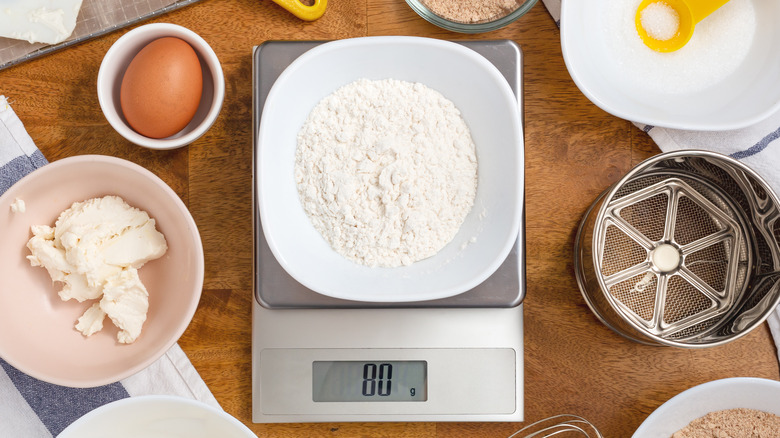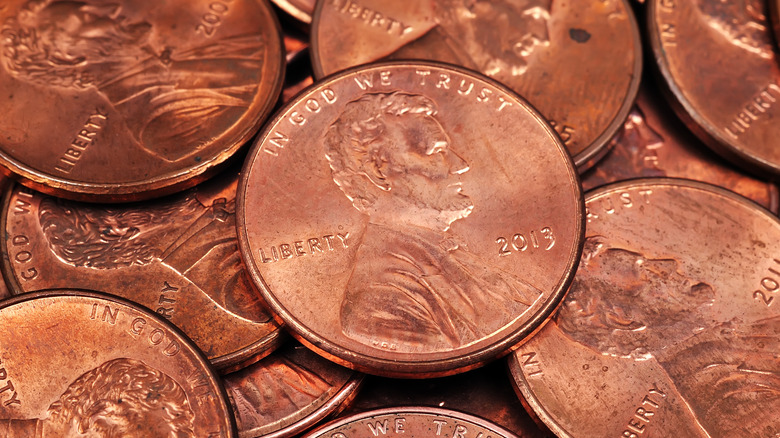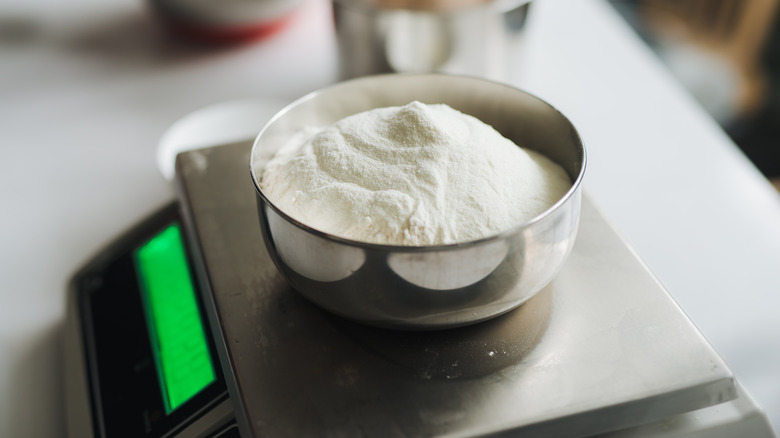Here's How To Tell If Your Kitchen Scale Is Accurate
If you love to bake but don't own a digital kitchen scale, you aren't living your best pastry life. Well, maybe we shouldn't go that far. Still, owning a kitchen scale is practically a rite of passage for home bakers everywhere. Whether you're measuring ingredients for a triple chocolate cake or French macarons, a scale is your best friend when it comes to accuracy and can help your recipes turn out perfectly every time.
While American measuring cups and spoons work most of the time in the kitchen, switching over to the metric system can be life-changing. Not only does the system help you avoid measuring mistakes and achieve consistent results (via Taste of Home), but it also shaves time off one of the major annoyances of baking at home: Doing dishes. Just grab a scale, tare it to zero, load on your mixing bowl, and plop in your ingredients. Voilà, you're done! Less time cleaning measuring spoons and cups means more time eating fluffy, correctly measured cakes and croissants.
If you're already using a scale, props to you. That brings up an important question, though: Is it working properly? We have a few tried and true tricks up our sleeve that'll make sure your measuring is on point.
Use spare coins to put your scale in check
Does anyone still use actual cash and change? If, on a rare occasion, you have some pennies in your pocket, a good way to check the accuracy of your scale is to use "common cents," as Taste of Home says. How does it work? A single penny weighs 2.5 grams, according to the United States Mint. If your scale is designed to be accurate to the half-gram, it should read the correct weight for one coin (via Food 52). If your scale is only accurate up to 1 gram, it may round up the weight to 3 grams. In this case, try four pennies, which should come out to exactly 10 grams. Just make sure your coins aren't crusty or misshapen, as that could throw off the weight a smidge.
Don't have any pennies? Don't worry; nickels work, too. Load five up them on your scale and see if you get the correct 25 grams.
Other ways to make sure your scale is accurate
If you're fresh out of loose change, other common household items can give your scale a check-up. A stick (or ½ cup) of butter, for example, should weigh in at 4 ounces. It's even possible to monitor your scale's accuracy in the middle of a baking project. Just reference an ingredient conversion chart, such as the one on King Arthur Baking Company's website, to ensure that your scale is calculating the correct grams, ounces, and millimeters of flour, sugar, and other baking necessities. Be sure to always check the weight of the container you're using to hold the ingredients, then set the scale to zero before putting anything inside, says Serious Eats. Otherwise, just order some calibration weights, which are designed for this very purpose.
This is all fine and dandy, you might be saying, but what if you try these tricks and find that your scale is off? Some devices tout a calibration feature, so you might just need to recalibrate using the manufacturer's instructions. If you do this and your scale is still faulty, or if it's consistently telling you the wrong weights and doesn't have a calibration feature, it's probably time to upgrade to a new scale.


